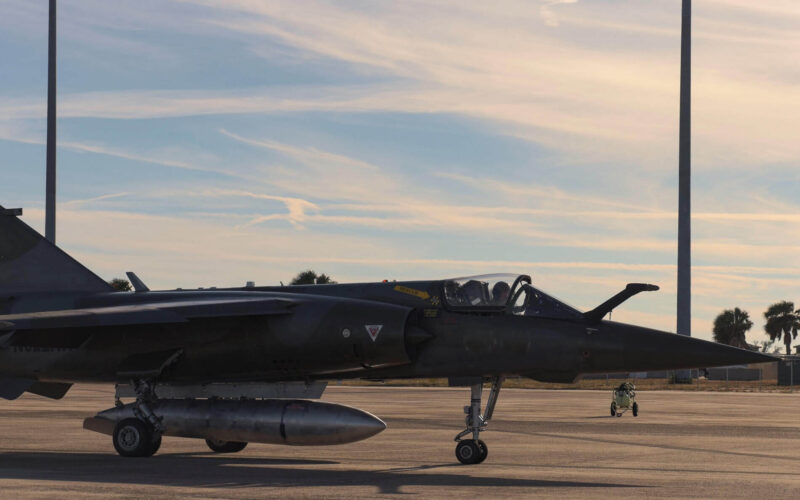A Mirage F1B operated by Airborne Tactical Advantage Company (ATAC) crashed at the end of the runway of Tyndall Air Force Base, Florida, in the United States. The two pilots sustained injuries and were transported to a nearby hospital. Their condition did not appear critical.
Available flight tracking data shows that shortly after taking off from Tyndall AFB, the aircraft started to fly in circles above the ocean. That specific flight trajectory could indicate that an issue was detected during takeoff and that the pilots had attempted to burn some fuel before returning to their departure point.
Upon landing, the fighter crashed off the end of the flight line. One of the pilots ejected, ATAC told Military.com. The issue that led to the crash is currently unknown.
Statement from Col. Gregory Moseley, 325th Fighter Wing commander, on the crash at Tyndall earlier today, Feb 25. pic.twitter.com/uxoaCj0CEY
— Tyndall AFB (@TeamTyndall) February 25, 2021
The aircraft is part of the fleet of 63 Dassault Mirage F1 fighter jets acquired by ATAC for a total value of €25 million in July 2017. They previously belonged to the French Air Force. The fleet arrived at Tyndall AFB on December 17, 2020, where they are to support the tactical airborne training and adversary air live training of F-22 Raptor and F-35 Lightning pilots.
The Mirage F1B involved in the crash, registered as N601AX, was the first to take off on August 22, 2019. Back then, the fighter jet was still sporting the special livery created for its retirement flight above the Champs Elysees during France’s national day parade on July 14, 2014.
ATAC F1s are off and flying. We recently undertook successful first flight with our F1 Mirage as we prepare to support customer training needs. All functions progressing: new facilities; upgraded aircraft; and additional pilots with more to come! pic.twitter.com/135UkedGQD
— ATAC (Airborne Tactical Advantage Company) (@ATACTextron) August 26, 2019
In October 2019, the Pentagon chose seven contractors to provide realistic training known as adversary air services (ADAIR) to the USAF, for a total of $6.4 billion in contracts with 37,000 hours of training flight expected annually. To this effect, Draken International, ATAC’s main competitor, also acquired 22 Mirage F1 fighter jets from the Spanish Air Force.
The US Air Force needs “more capability and they need more capacity. They can’t generate that internally anymore,” ATAC chief executive Jeffrey Parker commented when the company acquired the Mirage F1s.

